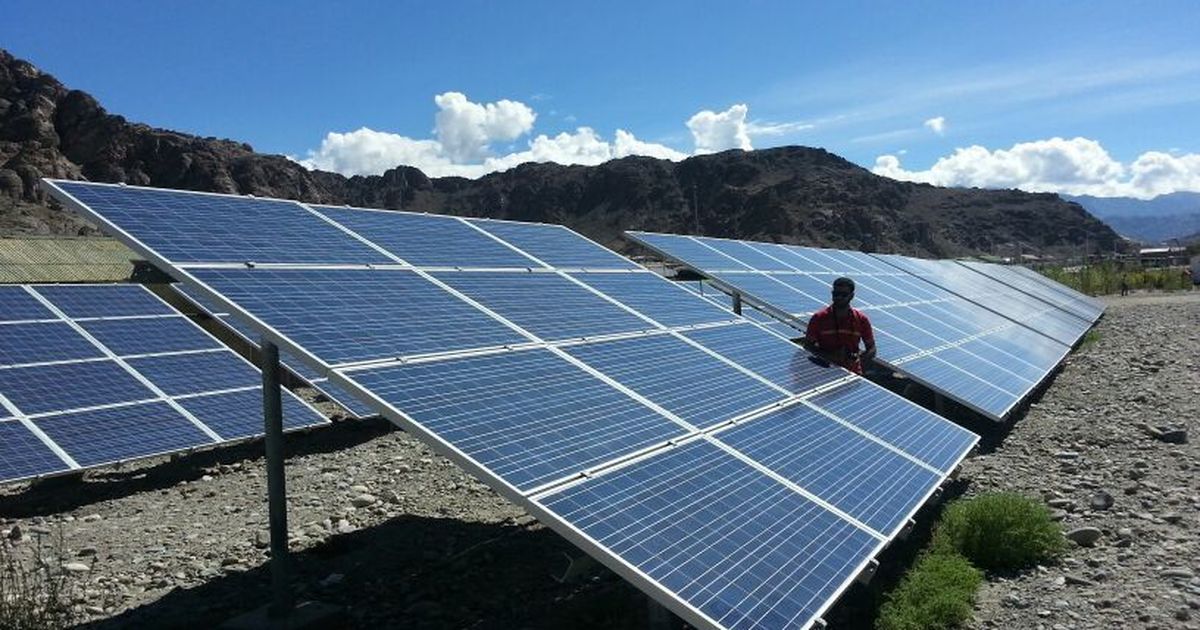
Solar panels are now an important part of how we get electricity. As electricity prices keep going up, people are becoming more aware of the environment, and the government is offering support, more homes and businesses are switching to solar power. This article explains why solar panels are in demand, the government schemes that promote them, and the latest improvements in solar panel technology.
Why Are Solar Panels in High Demand?
-
Rising Electricity Costs: Traditional energy prices are continuously increasing, making solar panels a cost-effective alternative.
-
Energy Independence: Solar power allows homes and businesses to reduce their dependence on grid electricity.
-
Environmental Benefits: Solar energy is clean and renewable, significantly reducing carbon emissions.
-
Government Incentives: Various schemes make solar energy more affordable, encouraging its widespread adoption.
Government Schemes Promoting Solar Energy
The Indian government has launched several initiatives to promote the adoption of solar energy. These schemes provide financial assistance and incentives to make solar panels more accessible to consumers.
1. PM Surya Ghar Muft Bijli Yojana
The PM Surya Ghar Muft Bijli Yojana is a revolutionary scheme aimed at providing free electricity to households by installing solar panels. Under this initiative, eligible homes can receive up to 300 units of free electricity per month, reducing dependency on traditional power sources. This scheme not only helps families save on electricity bills but also supports the overall growth of solar energy in India.
2. Kusum Yojana
The (Kisan Urja Suraksha Evam Utthaan Mahabhiyan) is designed to support farmers by providing subsidies for solar-powered irrigation pumps. This scheme helps farmers reduce their reliance on diesel-powered pumps, cutting fuel costs and promoting sustainable agriculture. By encouraging the use of solar energy in the agricultural sector, Kusum Yojana contributes to India’s clean energy goals.
3. Solar Rooftop Subsidy Scheme
Apart from the above schemes, the government offers subsidies for installing rooftop solar panels in residential and commercial buildings. These subsidies make solar panel installations more affordable and encourage widespread adoption.
Advanced Technologies in Solar Panels
Technological advancements in the solar industry have significantly improved the efficiency and performance of solar panels. Two of the most innovative technologies in the market today are Bifacial Solar Panels and Topcon Solar Panels.
1. Bifacial Solar Panels
Bifacial Solar Panels generate electricity from both sides, capturing sunlight reflected from the ground. This feature increases energy output and efficiency, making them ideal for commercial and utility-scale solar projects. These panels perform exceptionally well in open areas with high reflectivity, such as sandy or snowy environments.
2. Topcon Solar Panels
Topcon Solar Panels (Tunnel Oxide Passivated Contact) are the latest advancement in solar cell technology. They offer higher efficiency compared to traditional solar panels by reducing energy losses and improving light absorption. These panels are gaining popularity due to their superior performance, longer lifespan, and ability to generate more power in low-light conditions.
Role of Solar Panel Manufacturers in India
India is home to several leading solar panel manufacturers in India that contribute to the country’s renewable energy transition. These companies focus on producing high-efficiency panels and adopting advanced technologies like Bifacial Solar Panels and Topcon Solar Panels to meet the growing demand. The presence of a strong solar panel manufacturing company in India ensures that consumers have access to high-quality, reliable, and affordable solar solutions.
Why Government Schemes and Technology Matter
-
Affordable Solar Energy: Government initiatives like the PM Surya Ghar Muft Bijli Yojana and Kusum Yojana make solar power accessible to a larger population.
-
Improved Efficiency: Advanced technologies like Bifacial Solar Panel and Topcon Solar Panel enhance energy generation, maximizing returns on investment.
-
Energy Security: Widespread adoption of solar panels reduces dependency on fossil fuels, ensuring a stable and sustainable energy future.
-
Boost to Local Manufacturers: Government policies encourage the growth of solar panel company in India, creating jobs and strengthening the domestic solar industry.
Conclusion
The increasing demand for solar panels is driven by rising electricity costs, government incentives, and advancements in solar technology. With initiatives like PM Surya Ghar Muft Bijli Yojana and Kusum Yojana, more households and businesses are embracing solar energy. Additionally, the emergence of Bifacial Solar Panels and Topcon Solar Panels is revolutionizing the industry by improving efficiency and performance. As solar panel manufacturers continue to innovate, India is well on its way to becoming a global leader in renewable energy